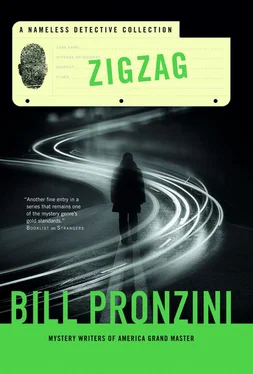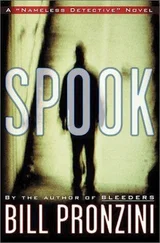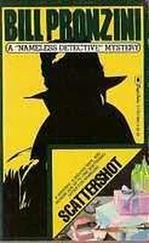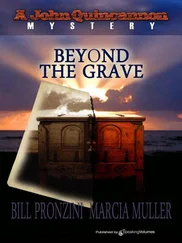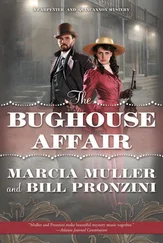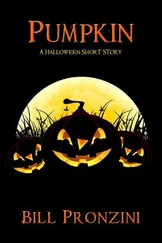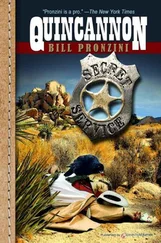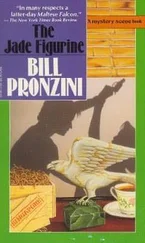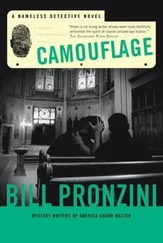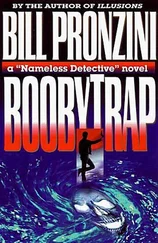“Sort of like Charles Fort.”
“Who?”
Young people today: no sense of history. “Never mind.”
“Well, anyway,” Tamara said, “if he wrote up the hospital revenge incident, none of the mainstream print media would touch it. Might’ve gotten it into some supermarket sheet, but if so I couldn’t find a reference through any of the search engines.”
“Potential legal problem even if real names weren’t used.”
“Right. But the good news is that Lenihan also writes a creature-feature blog called ‘Oddments’ and he posted a long piece there. You can say pretty much anything you want online if you don’t cross the libel line. No names in the piece, but there’re enough details to ID what he’s writing about. You’ll see. I printed it out for you.”
“Good, thanks. Anything else?”
“A little on the Erskines, yeah,” she said. “Still working on the other stuff you asked for. All I’ve got so far is the name of the hospital — South Bay Memorial.”
“What should I know about the Erskines?”
“Not much that I can see. Marian Erskine’s estimated worth is around fifteen mil. Inherited money — her father was an electrical engineer, invented some kind of device that he patented and sold to the aerospace industry for megabucks back in the seventies. She’s fifty-one, married and divorced twice before she hooked up with Peter Erskine. He’s lasted the longest so far — six years. No children. Longtime member of a group called the International Psychical Research Society; makes an annual four-figure donation to it. Used to be proactive in charity work before her heart attack.”
“Heart attack? When was that?”
“Three months ago. Bad one — she nearly died.”
No wonder she looked as she did, why Erskine was so solicitous and disapproving of her cognac drinking. Alcohol coupled with nervous tension and undue excitement is a potentially lethal combination in a heart patient. But I wondered why neither of them had mentioned the coronary to me. Too painful and too personal a subject, maybe. And irrelevant to the task I was being hired for.
“Peter Erskine,” Tamara said. “Age thirty-six. Born and raised in Los Gatos. No prior marriages. Went to work for a brokerage firm in Silicon Valley straight out of high school, worked his way up to a low-level sales position. Met Marian Erskine at a charity tennis tournament at one of the country clubs down there — he plays and so did she before the heart thing. Not long after they were married, he opened his own business — stockbroker and financial advisor — with her backing. Doesn’t seem to’ve made much of a success at it. Has an office with one employee in Menlo Park.”
“He’s a good-looking guy. And she’s considerably older and in poor health. How good is the marriage?”
“You mean is he the type to put his balls in other courts?” I winced at that, and she grinned. “Well, I don’t know, I didn’t do any digging along those lines. But if a young guy’s not getting much at home, wouldn’t be any surprise if he went out prowling now and then. Real careful like, though. Wouldn’t want to lose his meal ticket.”
“Don’t be so cynical.”
“Hah,” she said.
I took the thin sheaf of printouts she handed me into my office and sat at my desk to go over them. I skimmed through a couple of brief newspaper accounts of the fatal freeway accident. Erskine’s version, that Vok had caused it by inattentive driving, was corroborated by witnesses. Vok had been taken to and had died in South Bay Memorial Hospital, the reason for that destination being twofold: it was relatively close to the scene of the accident and it had a trauma unit.
The background info on the Voks was scanty, evidently all that was available; Tamara is nothing if not thorough. He’d been fifty-two, his wife forty-nine, at the time of their deaths. Both of Lithuanian descent. Antanas (Lithuanian for Anthony ) Vok had been born in the Baltic state and immigrated to the U.S. with mother and father, now both deceased, at age twelve, and as an adult had become a naturalized citizen; Elza Vok had been born in this country. No children. Next of kin unknown. They’d lived at 1936 Dillard Street #4 in San Jose, where he’d worked as a butcher for one of the medium-sized supermarket chains and she as a cleaning woman. Nothing on their religious beliefs or alleged cult ties, of course. Devotees of witchcraft and black magic don’t advertise the fact.
The printout on our clients contained a few more details, such as Peter Erskine’s office address and the name of his sole employee, a woman named Melanie Vinson, but none that held my attention. Joseph Lenihan’s blog write-up did.
The header on it was “Dead Men Rise Up Never?” The tone of the piece was a curious mix of flip-hip — the kind of wry light touch reporters gave to “silly season” stories back in the day — and serious occult-themed speculation. Lenihan’s style, I supposed, for all his blog entries. No names were used, as Tamara had said, just terms such as “accident victim of European descent” and “prominent Peninsula resident.” Antanas Vok’s last words to Peter Erskine were quoted verbatim: “I will return from the dead and destroy you as you have destroyed me. You will die a death far more terrible than mine. This I vow in the name of Satan, my lord and master, with whom I have made an eternal covenant.” The passing of the black host was also mentioned in some detail.
Lenihan went on to say that, according to the unnamed “reliable source” he’d gotten this information from, the recipient and his wife were “consumed with terror and immediately fled the room” and that later they had “refused all requests for an interview about the incident.” He then wrote: “Subsequent investigation revealed undeniable evidence that the dead man worshipped the devil and took part in Satanic rituals and blow-your-mind sex orgies.” And finished up with: “Is it possible that a dead dude in league with Lucifer can wreak vengeance on the living? Only time will tell.”
Assuming the Vok quote was accurate, and it probably was since Lenihan also knew about the black host, the “reliable source” had to be somebody who was in the hospital room at the time. The nurse Erskine had mentioned? Or had Lenihan managed to track down the tall, heavyset, stoic party related to or acquainted with the Voks?
The “undeniable evidence” verifying the devil worship was given as “a bone-freezing collection of grimoires, drawings of pentagrams and other black magic symbols, correspondence describing blood sacrifices, and other weird de Sade type stuff.” Some of the titles of the grimoires, or manuals for invoking demons and spirits of the dead, were listed: Malleus Maleficarum. The Golden Bough. The Book of Eibon. The Grimoire of Pope Honorius. And two in German, which apparently Vok had been conversant in: Die Walpurgisnacht im Westphalialeben and Den Nederwelt von Renaissanischer Zeit.
How Lenihan knew all this wasn’t stated, though there was a sly inference that he’d managed to gain access to the couple’s apartment after Vok’s death, just long enough to view its contents and take some notes. Whether he’d also appropriated any of the books or other items was an unanswered question. He did say that all of the evidence “mysteriously disappeared shortly afterward,” the inference there being that he’d gone back for a second look and found the apartment cleaned out.
That was all. Anything more I would have to try to pry out of Lenihan himself. If I could get him to talk to me in the first place.
The address Tamara had found for him was in Santa Clara, north of San Jose; she’d also gotten his telephone number. A page of background info told me he was forty years old, unmarried, and — no surprise — a pothead with one arrest for possession, another plus a hand-slap conviction for minor dealing. Writing creature features was apparently an avocation; his main source of income came from repairing computers for college students and others who couldn’t afford topline service, work he did from home.
Читать дальше
